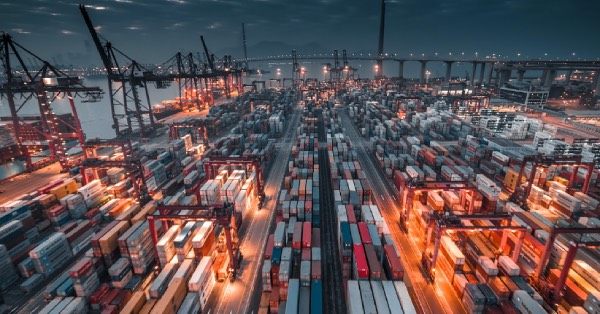The ocean freight sector, with maritime transport at its heart, has never been more central to the successful evolution of globalised trade. In part-7 of this digital decarbonisation series, we look at how increasing the levels of freight transparency using digital technologies can ultimately aid in decarbonising the industry while helping manufacturers address their JIT concerns.
COVID-19 and the great semi-conductor shortage of 2021 got manufacturers worried. ‘Just-in-Time’ (JIT) supply chains seemed like a safe haven for smart money, but following a series of high-profile disruptions to global freight in recent years, some are questioning the wisdom of JIT and are starting to look at ‘nearshoring’ or ‘onshoring’ their supply chains. This is not good news for ocean carriers.

The central focus for the globalised freight transport sector must be to address manufacturer concerns and help build resilience into the supply chain by assisting in a process of ‘digital onshoring’. Instead of pushing global industries towards isolationism and the closing of supply loops by repatriating manufacturing facilities and pivoting to domestic raw material supplies, the maritime transport sector has an opportunity to help manufacturers look to address their concerns digitally by introducing higher levels of transparency in freight.
Consider the drivers for onshoring: The simplification of logistics, easier forecasting and inventory management, a unified time zone across the business, more control over quality, and a reduction in transport related emissions. These aims can now be achieved in the global model by harnessing
emerging digital technologies, delivered over robust connectivity networks.
Choosing this over a regression towards more insular and nationalised economies is a vital step towards building a new age of globalised trade.
Shipping must help their cargo owners confront current inadequacies in the global model. The technological evolution of globalised trade preserves the advantages of a more accessible and diverse marketplace, while also fostering closer cooperation between geopolitical regions. This is good for business, but good for international relations too. Choosing this over a regression towards more insular and nationalised economies is a vital step towards building a new age of globalised trade. Ship operators have to play an active role in bringing transoceanic ports ‘closer together’ by facilitating greater transparency, providing better data, and becoming more resilient to external threats through strategic automation and more digitally-enabled processes.
The ocean freight sector, with maritime transport at its heart, has never been more central to the successful evolution of globalised trade. Every ship operator has a role to play in ensuring that transport by sea is fit for purpose in a digitally-enabled, post COVID-19 international trading environment, by harnessing the technologies that are available today to help them and their trade partners de-isolate, derisk and decarbonise.
Download The Optimal Route for free HERE.
DIGITAL DECARBONISATION SERIES
In partnership with Inmarsat, Thetius launched a major report on digital decarbonisation at the Nor-Shipping conference in April 2022 to critical acclaim. Read by thousands of industry professionals across the globe, The Optimal Route examines the impact of digital technologies on the trajectory of decarbonisation in shipping.
Based on the findings of this research, we have put together a new series of articles on digital decarbonisation which will be released to our subscribers over the coming weeks. Each article will zoom in on an aspect of digital decarbonisation and together will provide a jam-packed analysis that includes the latest and greatest examples of how digital technologies can prove the difference between success and failure in decarbonising the ocean supply chain.
Source: Thetius by Matthew Kenney









































